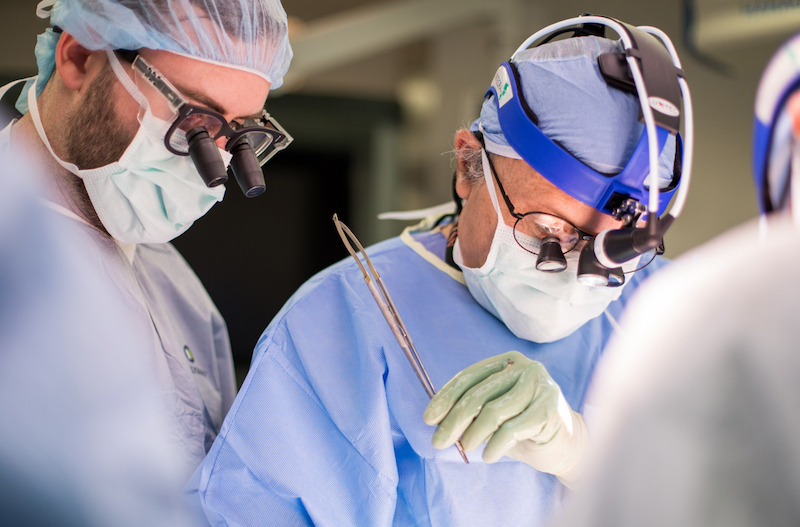Donor-Intervention Research Slowed Amidst Issues of Informed Consent and Conflicts Among Disparate IRBs

The Atlantic reports on the difficulties in the current climate of conducting donor-intervention research due to issues of informed consent, disagreements over what constitutes human subject research, and conflicting views of Institutional Review Boards (IRB) spread across multiple centers with patients putatively impacted by the research protocol. Moreover, doctors must test the experimental interventions designed to improve outcomes within the crucible of a short time window, given that a donated organ is suitable for transplantation for only a limited mumber of hours.
Doctors have a short window of time to experiment on brain-dead donors to improve procedures—and that's if they can get permission.
As a matter of biology, brain death is catastrophic for the body.Yes, the heart can still beat and a ventilator can provide oxygen, but there is no brain to coordinate the tasks of staying alive. Hormones that tell organs what to do are out of whack. Inflammatory molecules flood the body. Cells die. “You can see the kidneys don’t work as well, the lungs don’t work was well, and the heart can look stunned,” says Darren Malinoski, a trauma surgeon at Oregon Health and Science University.
There’s nothing to do for the dead patient at this point. But his or her organs can be saved, and because most transplanted organs in the United States come from brain-dead donors, these minutes are crucial. For this reason, researchers have wanted to study the use of drugs or procedures in brain-dead donors, halting organ damage that happens in the minutes after death.
But this kind of research is almost impossible to do in the United States. The ethics of so-called donor-intervention research are incredibly fraught. How do you get informed consent and from whom? The dead donor? The live recipient—or possibly dozens of live recipients getting tissues or organs from a single donor, fanned out across the country at different hospitals each with their own ethics review boards? All this would unfold against intense time pressure. Every minute of delay is a minute in which the organ is deteriorating.
 Claus Niemann, M.D., Professor of Anesthesia and Surgery at UCSF, was principal investigator on a clinical study showing that mild hypothermia in deceased organ donors resulted in an overall nearly 40 percent increase in the successful function of donated kidneys after surgery. However, follow-on studies were delayed amid controversies over informed consent and the conflicting guidelines of geographically dispersed Institutional Review Boards (IRB).
Claus Niemann, M.D., Professor of Anesthesia and Surgery at UCSF, was principal investigator on a clinical study showing that mild hypothermia in deceased organ donors resulted in an overall nearly 40 percent increase in the successful function of donated kidneys after surgery. However, follow-on studies were delayed amid controversies over informed consent and the conflicting guidelines of geographically dispersed Institutional Review Boards (IRB).In 2015, Malinoski and his co-investigator Claus Niemann, a transplant doctor at University of California San Francisco, published results from a rare donor-intervention trial. The reaction to their study became an object lesson in why doctors avoid this kind of research.
The research team wanted to see if cooling the body temperature of brain-dead donors by about 4.5 degrees Fahrenheit—aka hypothermia—could improve the function of transplanted kidneys. Since kidneys are put on ice after they’re taken out of the body, perhaps cooling the kidneys while still in the body could help preserve them. Every institution involved in human subjects research has an institutional review board, and UCSF’s board decided doctors did not have to ask for informed consent. In the case of the donors, the board reasoned they were dead and thus not human research subjects. In the case of the organ recipients, it reasoned the hypothermia protocol posed only minimal risk to them.
 Sandy Feng, M.D., Ph.D., Professor of Surgery in the Division of Transplant Surgery at UCSF, has played a leading role in developing a road-map for clinical investigators to navigate the ethical, regulatory, and logistical barriers to donor intervention research, creating a pathway so the research can proceed. (Links to her relevant publications and PowerPoint Presentation follow this summary).
Sandy Feng, M.D., Ph.D., Professor of Surgery in the Division of Transplant Surgery at UCSF, has played a leading role in developing a road-map for clinical investigators to navigate the ethical, regulatory, and logistical barriers to donor intervention research, creating a pathway so the research can proceed. (Links to her relevant publications and PowerPoint Presentation follow this summary). In 2016, Glazier, Feng, and others published the results of a survey of transplant surgeons, institutional review board (IRB) members, and organ procurement organization professionals. They found a wide range of views on the many unresolved questions, such as whether the donor or recipient’s hospital IRB should review the trial, who is a human research subject, and what kind of consent is necessary.
In one hypothetical scenario they asked about, a researcher wants to test a drug already used in dead organ donors to find the optimal dose to improve heart transplants. In their survey, 82 percent IRB members thought the trial was human subjects research. In contrast, 58 percent of transplant surgeons and 19 percent of organ procurement organization professionals agreed. IRBs are supposed to oversee human subjects research, so the community does not agree on a question as basic as whether an IRB should even oversee this research.
Practically, this confusion means the research rarely happens. “It gets shut down because everybody understands there is no pathway to doing this research,” says Sandy Feng, a transplant surgeon at UCSF who has written extensively about this issue. Funding agencies don’t want to fund it. Pharmaceutical companies don’t want to pursue it. Doctors shy away, not wanting to risk their reputations.
Responding to public criticism by the consumer advocacy organization Public Citizen, Darren Malinoski, a trauma surgeon at OHSU and one of the principal investigators on the follow-on study, urged that clear guidelines be formulated so research such as his can go forward absent the current controversy.
To doctors like Malinoski, clear guidelines for donor-intervention research—guidelines that can cut through the mess of diverging opinions—can’t come soon enough. He and Niemann had planned a follow-up trial. Cooling the donor’s body did appear to improve kidney transplant success, and now they wanted to compare it to an alternative technique that uses a machine to pump liquid through the kidney outside the body. But after the Public Citizen letter came out, potential collaborators were suddenly shaky. “When there’s controversy, people don’t want to touch it with a 10-foot pole,” says Malinoski. “It really set our study back over a year, year and a half.” After a lot of meetings and consultations, UCSF eventually gave them the go-ahead. The National Academy of Medicine can provide an authoritative answer for the whole country. “We’re looking forward to clarity,” he says, “Whatever is decided, we’re happy to follow it.”
